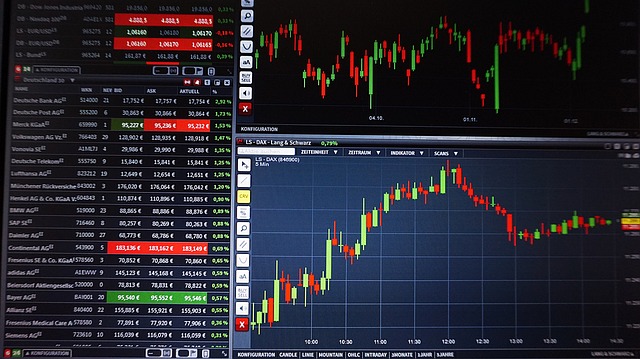Unraveling the World of Crypto Trading Bots: A Comprehensive Guide
In the rapidly evolving cryptocurrency landscape, trading bots have emerged as powerful tools for both novice and experienced traders. These automated systems promise to enhance trading efficiency, minimize risks, and capitalize on market fluctuations. However, navigating the world of trading bots can be daunting. In this article, we will delve into what crypto trading bots are, how they work, their advantages and disadvantages, popular types, and some recommendations based on my observations and experiences in the field.

What Are Crypto Trading Bots?
Crypto trading bots are software programs that automatically execute trades on behalf of traders. They utilize algorithms to analyze market data and execute trades, often at speeds and frequencies that are beyond human capability. Essentially, trading bots are designed to take advantage of market imbalances, making them an attractive option for profit-seeking traders.
How Do Trading Bots Work?
At their core, trading bots operate based on predefined criteria, set by the user or developer. Here are the key components that define their modus operandi:
1. Market Analysis
Trading bots constantly monitor the crypto market, analyzing price movements, trading volumes, and various indicators, such as Moving Averages, Relative Strength Index (RSI), and Bollinger Bands. This constant market analysis helps the bots identify potential trading opportunities.
2. Strategy Implementation
A successful trading bot will be powered by a trading strategy, which could be based on technical analysis, statistical analysis, or even machine learning. The bot executes trades only when specific conditions are met, reducing the emotional decision-making that often leads to losses.
3. Trade Execution
Once a trading opportunity is identified, the bot executes the trade at lightning speeds. The speed of execution can be crucial in the volatile crypto market, where prices can shift dramatically within seconds.
Advantages of Using Crypto Trading Bots
There are multiple advantages to using trading bots, which I believe can enhance a trader's overall strategy:
- **24/7 Trading:** Unlike human traders, trading bots can operate around the clock, allowing them to seize opportunities in the market at any time, whether it’s day or night.
- **Emotionless Trading:** Trading can often be influenced by emotions such as fear and greed. Bots operate on algorithms, allowing for more rational and systematic decision-making.
- **Increased Efficiency:** Bots can analyze vast quantities of data in a very short amount of time, which is impossible for human traders. This ability to process information rapidly is particularly beneficial in the fast-paced world of crypto trading.
- **Backtesting:** Many trading bots allow traders to backtest their strategies on historical data, providing insights into how the strategy would have performed in the past.
- **Consistent Trading Strategy:** Based on the bot’s algorithm, trades are executed based on a consistent strategy without deviation, which is essential for long-term trading success.
Disadvantages of Using Crypto Trading Bots
Despite their advantages, trading bots also come with a set of drawbacks. In my opinion, understanding these disadvantages is crucial for anyone considering their use:
- **Market Risks:** Crypto markets are notoriously volatile. A bot cannot predict market movements, and a poorly designed algorithm can lead to significant losses.
- **Technical Failures:** Bots rely on technology, which is susceptible to glitches, server downtimes, and other technical issues that could hinder performance.
- **Over-Optimization:** Traders may fall into the trap of over-optimizing their trading strategies based on historical performance, which can lead to poor real-time execution.
- **Lack of Personal Touch:** While algorithms are efficient, they often lack the intuition and experience that a seasoned trader might have, missing out on nuanced market dynamics.
- **Dependence on Strategy:** The success of a trading bot is heavily reliant on the underlying strategy. If the strategy is flawed or doesn't adapt to changing market conditions, the bot will likely incur losses.
Popular Types of Crypto Trading Bots
There are various types of trading bots, each designed for specific trading strategies and use cases. Let’s explore some of the most popular:
1. Arbitrage Bots
Arbitrage trading bots exploit price differences between exchanges. For instance, if Bitcoin is priced lower on Exchange A than on Exchange B, the bot will buy on Exchange A and sell on Exchange B, capitalizing on the price discrepancy. In my view, while arbitrage can yield consistent profits, it requires significant speed and accurate execution to be successful.
2. Market-Making Bots
Market-making bots place both buy and sell orders to profit from the spread between the two. They provide liquidity to the market, and in return, they earn trading fees. I believe this type of bot requires a substantial capital base and a keen sense of market behavior to be effective.
3. Trend-Following Bots
These bots analyze market trends and execute trades based on identifying upward or downward price movements. They often use indicators to confirm trends, such as moving averages or momentum indicators. I find that trend-following bots can be quite effective during strong trending markets but may struggle in sideways markets.
4. DCA Bots (Dollar-Cost Averaging)
Dollar-Cost Averaging bots invest a fixed amount of capital at regular intervals. This strategy helps to reduce the impact of volatility and is popular among long-term investors. In my opinion, DCA bots can be a great way to build a position in a volatile market without the stress of trying to time the market accurately.
Choosing the Right Trading Bot
Selecting the right trading bot is critical for your trading success. Here are several factors to consider:
1. Research and Reviews
Before investing in a trading bot, conduct thorough research. Read reviews, user testimonials, and analyze their track records. My experience shows that reputable trading bots often have a strong community and provide transparency about their performance.
2. Strategy Compatibility
Ensure the bot’s trading strategy aligns with your trading style and risk tolerance. A bot designed for aggressive day trading might not be suitable for a conservative long-term investor.
3. User Interface and User Experience
A user-friendly interface can significantly enhance your experience. It’s essential that the platform is easy to navigate, especially for those who are new to automated trading.
4. Security Features
Ensure that the bot operates securely. Look for features like two-factor authentication, wallet security, and compliance with data protection regulations. I cannot stress enough how crucial security is when dealing with investments and trading bots.
5. Cost and Fees
Evaluate the pricing structure of the bot. While some bots may charge a one-time fee, others might require a subscription or take a cut from your profits. Weigh these costs against the potential benefits.

Conclusion: A Balanced Approach to Crypto Trading Bots
In conclusion, crypto trading bots have the potential to enhance trading efficiency and profit opportunities. However, they are not a panacea. As a trader, it's essential to approach these tools with a balanced mindset. The reliability and performance of trading bots significantly hinge on both their algorithms and market conditions. Embrace the advantages while remaining aware of the risks and limitations associated with automation.
Ultimately, whether or not to use a trading bot is a personal decision, influenced by trading goals, experience, and risk tolerance. In my experience, incorporating bots into my trading strategy has allowed me to maintain discipline and seize opportunities that I might have otherwise missed. Thorough research, strategic planning, and continuous learning are crucial to navigating the world of cryptocurrency trading, both with and without the assistance of automated systems.